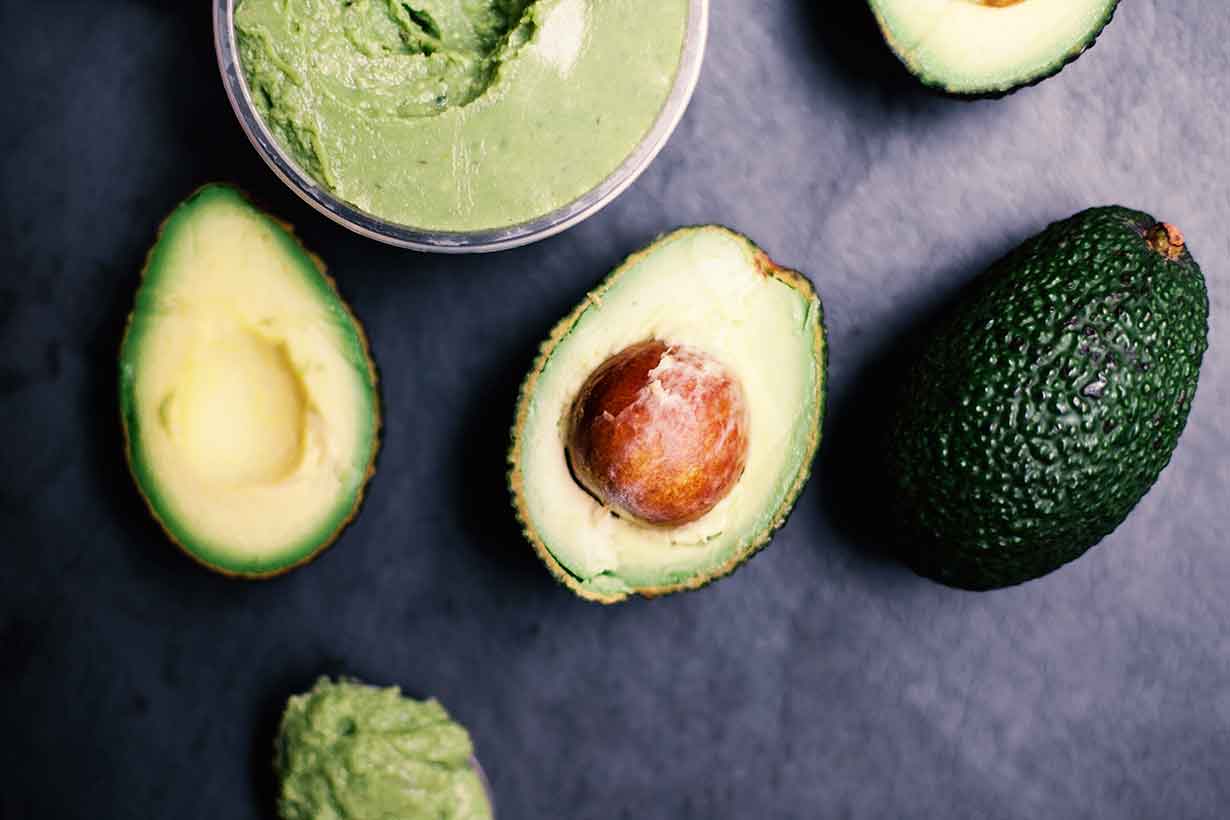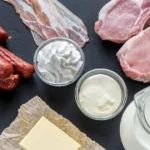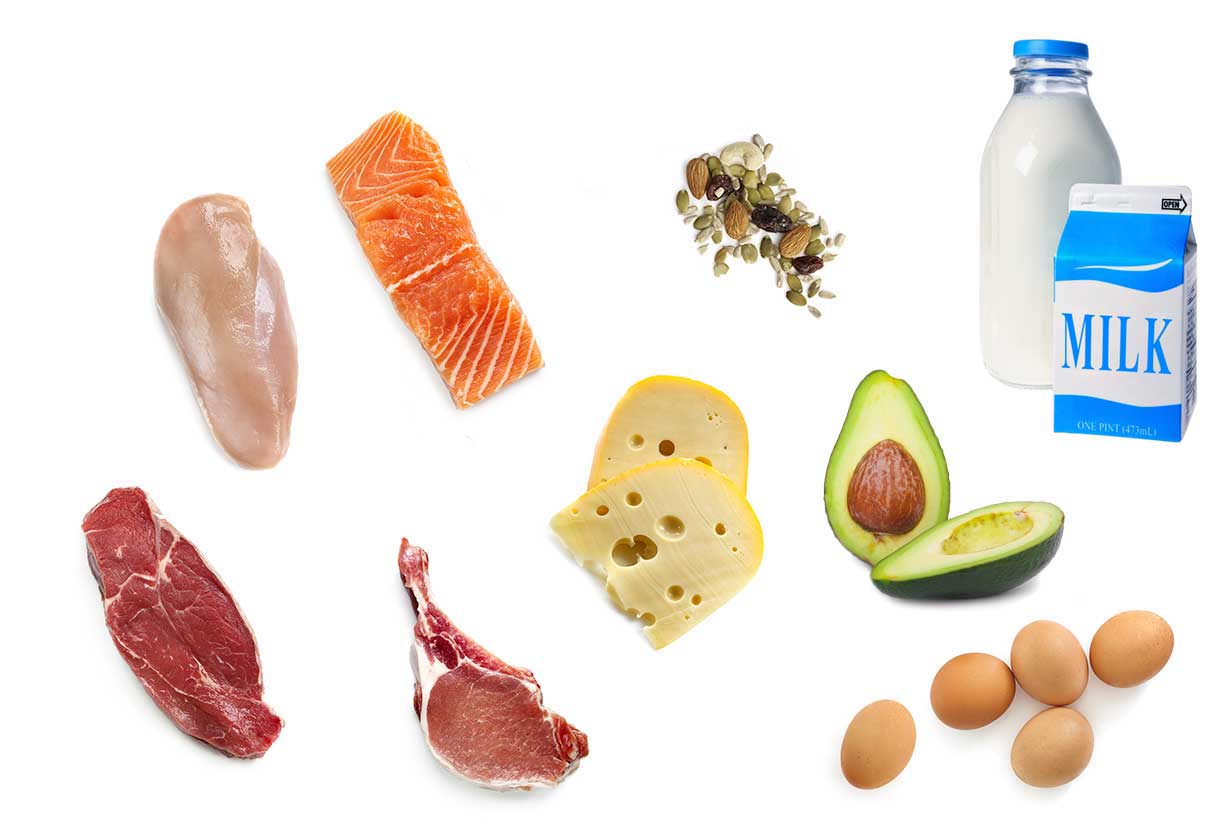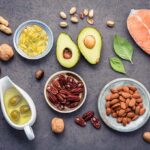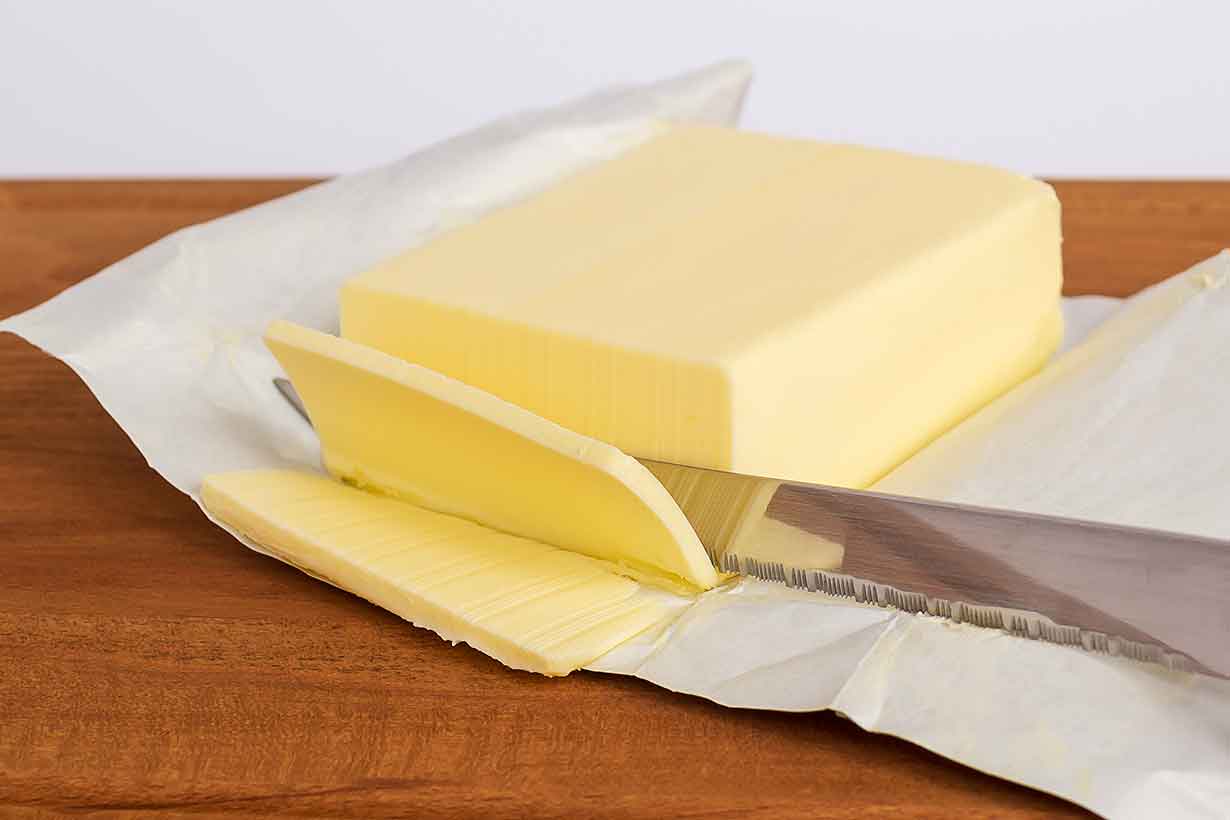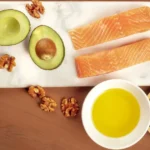Dietary fats are an important part of our diet, but they’re a nutritional topic that often leads to confusion.
This article aims to change that by sticking to the objective facts about dietary fat, providing you with all the information you need.
As part of this, we’ll explain the different types of fat, their characteristics, potential health effects, and where they’re found.
Key Takeaways
- Types and subtypes: There are four primary dietary fats—saturated, monounsaturated, polyunsaturated, and trans fats—and each one has various subtypes.
- Health effects: Different fats can affect our health in different ways, with their differentiating impact on blood lipids (cholesterol) being one of the most significant examples. Systematic reviews show that monounsaturated and polyunsaturated fats lower cholesterol compared to saturated fat.
- Saturation level: Fats with a higher degree of saturation are typically more stable and less likely to break down and oxidize. For this reason, polyunsaturated fats are the least stable.
Important Note: The content in this article is for informational and educational purposes only. It should not replace medical advice from your healthcare provider.
Table of contents
What Is Fat?

Alongside carbohydrates and protein, fat is one of the three macronutrients in our diet.
However, “fat” is not a single entity, and there are many different types and subtypes of fat.
Sometimes people refer to fats as “triglycerides,” which are the primary form of fat found in our body and food. Triglycerides are comprised of glycerol attached to three fatty acids (1).
Is Fat Essential For Humans?
Fat is essential for our health, but we do not have a biological dietary need for all the different fatty acids.
The only essential fats are omega-3 and omega-6 because our bodies cannot make them, thereby necessitating a dietary source (2).
Due to this, we need to consume omega-3 containing foods—such as oily fish—and foods with omega-6, which is prevalent in everything from meat to nuts and seeds.
Since omega-3 and omega-6 are vital for our health, they are referred to as essential fatty acids (EFAs).
Types of Fat
There are four main classifications of fat that we can find in food:
- Saturated fat
- Monounsaturated fat
- Polyunsaturated fat
- Trans fats
We’ll now provide a summary overview for each type of fat.
1) Saturated Fat
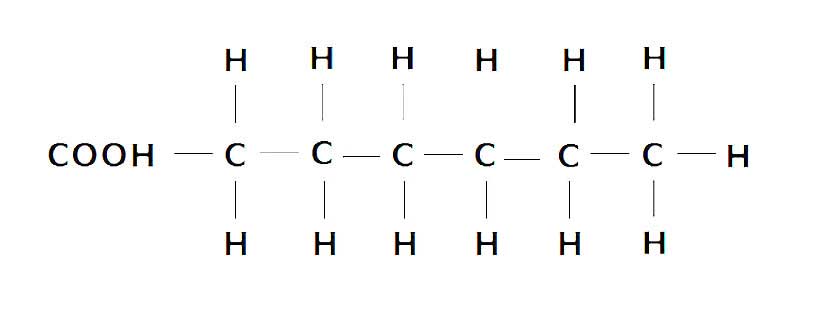
Also known as: saturated fatty acids, SFA, SFAs
Saturated fatty acids are fully “saturated” with hydrogen atoms.
To understand this, all fats are made from a chain of carbon (C), hydrogen (H) and oxygen (O) atoms.
In a saturated fat, all the carbon atoms connect with each other using a single bond. This allows them to bond with all surrounding hydrogen atoms, making the fat fully “saturated” (3).
As the above image of a saturated fat shows, the lack of double bonds between carbon atoms allows them to bond with all surrounding hydrogen atoms.
In contrast, unsaturated fats contain one or more double bonds between carbon atoms. Since carbon atoms have only four available bonds, a double bond means they cannot bond with all surrounding hydrogen atoms, making the fat “unsaturated.”
Since the molecules in saturated fats are closely packed together, the fat is solid at room temperature and very stable.
Saturated Fatty Acids in Foods
Just as “fat” is not only one thing, neither is saturated fat a single entity.
Saturated fat is composed of a wide range of saturated fatty acids, all with a different number of carbon atoms in their chain.
For this reason, some are known as ‘long-chain’ saturated fats and others are called ‘short-chain’.
The three most common saturated fatty acids in typical diets include:
- Palmitic acid: The most abundant saturated fatty acid in the diet is a long-chain saturated fat with 16 carbon atoms. We can find it in a wide range of animal-based and plant-based foods, including dairy, meat, nuts, and seeds.
- Stearic acid: Stearic acid is another common long-chain saturated fat with 18 carbon atoms. Cocoa butter contains it in high proportions, and meat products are typically high in stearic acid.
- Lauric acid: Lauric acid is a medium-chain saturated fatty acid with 12 carbon atoms found in high proportions in tropical fats like coconut oil and palm oil.
Notably, different saturated fatty acids are present in various proportions in different foods.
All saturated fatty acids can have slightly different effects on our health, with lauric acid, myristic acid, and palmitic acid having the most prominent impact on raising “bad” LDL cholesterol (4).
Profiling each saturated fatty acid is beyond the scope of this article, but you can learn more in the article below.
Related: Saturated Fat: Health Effects, Foods and Intake Limits
Food Sources
While many different foods contain saturated fat, it occurs in exceptionally high concentrations in dairy fat and tropical fats like coconut oil.
Some examples of foods high in saturated fat include:
- Cocoa butter and chocolate products
- Dairy fat, found in foods like butter, cheese, cream, ghee, and yogurt
- Fatty cuts of meat like beef, lamb, and pork
- Processed foods rich in butter or palm oil: cakes, chocolate, cookies, pastries,
- Tropical fats like coconut and palm oil
Learn more: 40 Foods High In Saturated Fat
2) Monounsaturated Fat (MUFA)
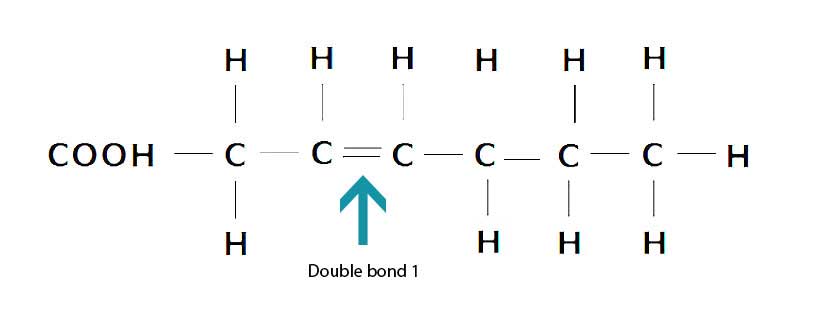
Also known as: monounsaturated fatty acids, MUFA, MUFAs
Monounsaturated fatty acids are a type of unsaturated fat usually liquid at room temperature.
Unlike saturated fat, monounsaturated fats contain a single double bond between two carbon atoms, as shown in the above image.
The presence of this double bond means that monounsaturated fat is not fully saturated with hydrogen atoms, making it less heat stable than saturated fat (5). However, saturation is not the only consideration that determines the oxidative stability of cooking fat.
For instance, polyphenols in cooking oil can help to prevent oxidative damage and the oil from breaking down, as can a lower proportion of polyunsaturated fat (6, 7, 8).
Some predominantly monounsaturated fats—such as extra virgin olive oil—contain high amounts of polyphenols and a relatively low proportion of polyunsaturated fat.
As a replacement for saturated fats, research consistently shows that monounsaturated fat typically lowers LDL cholesterol (9, 10).
Monounsaturated Fatty Acids in Food
Similar to saturated fat, there is a wide range of monounsaturated fatty acids too.
The most prevalent of these is called oleic acid, which is among the most abundant fatty acids found in food (11).
You may not know it by name, but oleic acid is the predominant fatty acid in avocados and olive oil, as well as most kinds of meat.
The three most common monounsaturated fatty acids in typical diets include:
- Oleic acid: This monounsaturated fatty acid has 18 carbon atoms and a single double bond. It can be found in high amounts in foods like avocados, olive oil, peanuts, and meat fat.
- Palmitoleic acid: Palmitoleic acid has 16 carbon atoms and a double bond. Foods highest in palmitoleic acid include macadamia nuts, oily fish, avocados, and meat fat.
- Vaccenic acid: This monounsaturated fatty acid contains 18 carbon atoms and a double bond. The most common dietary sources of vaccenic acid include fatty meat and foods with a high milkfat content. While technically a monounsaturated fat, it is also a naturally occuring trans fat—not to be confused with artificial trans fats, as we’ll discuss later.
Foods High in Monounsaturated Fat
Some examples of foods high in monounsaturated fatty acids include:
- Avocados
- Fish
- Meat
- Nuts (especially macadamia)
- Olives and olive oil
- Seeds
- Vegetable oils with a high oleic acid content
Learn more: What Is Monounsaturated Fat and Does It Have Benefits?
3) Polyunsaturated Fat (PUFA)
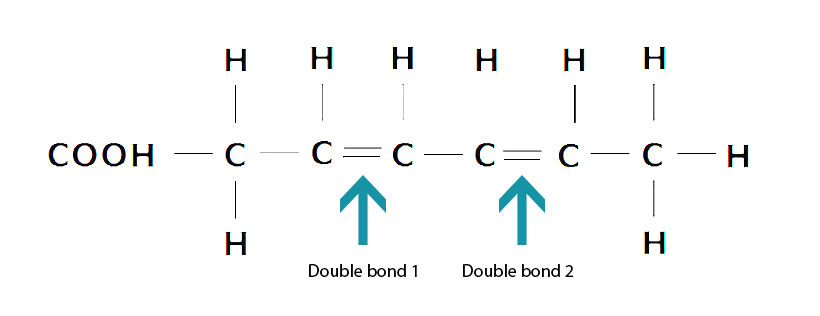
Also known as: polyunsaturated fatty acids, PUFA, PUFAs
Polyunsaturated fats are another type of unsaturated fat.
The main factor that differentiates polyunsaturated fats from monounsaturated fats is that they have multiple double bonds in their structure rather than a single one.
The above image shows how a polyunsaturated fat looks, with this one having two double bonds present between its carbon atoms.
Polyunsaturated fats are liquid at room temperature, and since they are the least saturated, they can react with oxygen more easily. This makes them less stable than saturated and monounsaturated fats, particularly when exposed to high-heat temperatures (12, 13).
There are two primary types of polyunsaturated fat: omega-3 and omega-6.
Omega-3
Omega-3 fats play a vital role in our overall health.
There are three primary omega-3 fatty acids:
- Alpha-Linolenic Acid (ALA): ALA has 18 carbon atoms and three double bonds. We can find it in plant-based foods such as canola oil, chia seeds, flaxseeds, soybeans, and walnuts. The body is able to convert small amounts of ALA into two more bioavailable forms of omega-3 called docosahexaenoic acid and eicosapentaenoic acid (14).
- Docosahexaenoic acid (DHA): DHA has 22 carbon atoms and six double bonds. It is predominantly found in fatty fish such as herring, mackerel, and salmon.
- Eicosapentaenoic acid (EPA): EPA contains 20 carbon atoms and it has five double bonds. Like DHA, it is predominantly found in fatty fish.
Foods Sources of Omega-3
Fish and seafood are the best sources of preformed omega-3 fatty acids EPA and DHA. However, it is worth noting that algae supplements can also provide high levels of EPA and DHA, making them an ideal option for vegans.
Some examples of foods high in omega-3 fatty acids include:
- Oily fish such as anchovies, herring, mackerel, salmon, sardines and trout (EPA and DHA)
- Fish roe (EPA and DHA)
- Oysters and other shellfish (EPA and DHA)
- Nuts: Walnuts are by far the best source (ALA)
- Seeds and seed oils: Canola oil, chia seeds, flax seeds (ALA)
Oily fish is widely recognized as the best dietary source of omega-3 fatty acids.
There are many different foods that contain omega-3, and you can learn more about that here: Foods High In Omega-3 (and Which Form Is Best?)
While plant foods also contain omega-3, this is in the form of ALA, which is not as bioavailable and requires conversion to EPA and DHA inside the body. However, this conversion rate is generally lower than 10% (15).
While EPA and DHA intake have been linked to health benefits, most people consume extremely low amounts, at around 0.1 grams daily (16).
Learn more: What Is Omega-3 and What Benefits Does It Have?
Omega-6
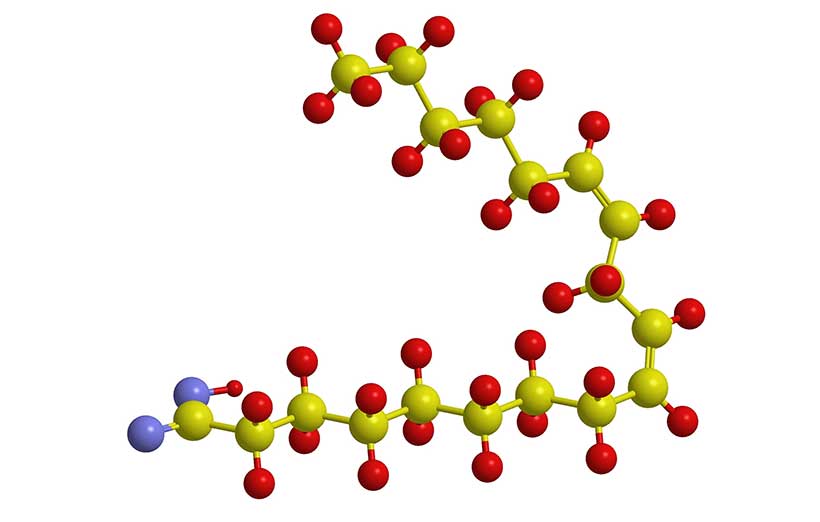
Omega-6 is also an essential fat, meaning that we need to acquire sufficient amounts of this fatty acid from food. However, it is much more common across a wider group of foods than omega-3, making a sufficient intake easier.
The most common dietary omega-6 fatty acids include:
- Linoleic Acid (LA): LA is the most common omega-6 fatty acid found in food, and it has 18 carbon atoms and two double bonds. LA can be found in a wide range of animal-based and plant-based foods. The body converts LA into another type of omega-6 called arachidonic acid (AA), although preformed AA can also be found in animal foods.
- Arachidonic Acid (AA): AA is a type of preformed omega-6 fatty acid that is ready to use by the body. It has 20 carbon atoms and four double bonds in its structure. AA has a role in functions like building tissue, general growth and development, and it’s a precursor to compounds which trigger the body’s inflammatory response to injury (17, 18).
- Gamma-Linolenic Acid (GLA): GLA is an omega-6 fatty acid with 18 carbon atoms and three double bonds. GLA is mainly found in seeds, with hemp seeds and evening primrose oil being two common sources.
Omega-6’s Role in Inflammation
When discussing omega-3 and omega-6, a common topic that arises is how the ratio of these two fatty acids may affect health. This debate largely revolves around competition between the pro-inflammatory functions of omega-6 and the anti-inflammatory processes of omega-3.
For instance, some researchers claim that traditional human diets had an omega-6 to 3 ratio close to 1:1. Conversely, the modern American diet can be as high as 20:1, which some researchers theorized may lead to an increased risk of damage from pro-inflammatory processes (19, 20).
But is this something we should actually worry about?
As with any nutritional topic, the answer is context-dependent. However, recent research suggests that getting a sufficient amount of preformed omega-3 (EPA and DHA) is more important than a specific intake ratio of omega-3 to omega-6 (21, 22).
This is because it’s the absolute intake of EPA and DHA that has the most significant impact on the omega-3 index—a measure of the amount of EPA and DHA in the blood (23). In this regard, having an omega-3 index above 8% has been shown to lower inflammation and and is linked to better health outcomes, regardless of omega-6 intake (24).
Furthermore, a 2020 systematic review and meta-analysis found that individuals with higher omega-6 linoleic acid intake had a “modestly lower risk of mortality from all causes, cardiovascular disease, and cancer” (25).
It is also worth noting that linoleic acid significantly decreases “bad” LDL cholesterol levels when replacing saturated fat, as demonstrated in a 2025 systematic review of 24 randomized controlled trials (26).
Learn more: The Omega-6 to Omega-3 Ratio: Does It Matter?
Foods High in Omega-6 Fatty Acids
Here are some examples of foods high in omega-6 fatty acids:
- Fatty cuts of chicken and pork
- Mayonnaise and other processed foods containing high levels of polyunsaturated vegetable oils
- Nuts
- Potato chips
- Salad dressings
- Seeds
- Vegetable oils including corn, grapeseed, peanut, soybean, and sunflower oil.
4) Trans Fats
The origin of trans fats can either be natural or artificial.
Synthetic trans fats are unsaturated fatty acids—such as cottonseed or soybean oil—that have undergone a hydrogenation process to give them similar characteristics to saturated fats. For example, vegetable shortening and margarine made with trans fats have a solid texture at room temperature and display good stability.
Initially, researchers saw potential benefits from the hydrogenation process such as better shelf-life and more stability at high heat.
However, it was found that trans fats raise “bad” LDL cholesterol and lower “good” HDL cholesterol, as well as increase markers of inflammation (27, 28). Subsequent research found that trans fats were linked to a higher risk of mortality and heart disease (29, 30).
Following these findings, product reformulations and regulatory bans have largely removed trans fats from the food supply (31). However, while they are banned in several countries—including the United States—they are still legal in other countries.
Conjugated linoleic acid (CLA) is a type of trans fatty acid found in animal fat, and it does not appear to be linked to the same negative health effects as man-made trans fats (32).
Foods High in Trans Fatty Acids
In countries without a trans fat ban, product reformulations should mean that trans fats are not widely prevalent.
However, here are some examples of foods with the highest possibility of containing them in countries without a trans fat ban:
- Cakes and cookies
- Crackers
- Deep-fried foods
- Margarine products
- Non-dairy coffee creamers
- Pies and pastries
The best way to avoid trans fats is to give the label a quick scan for any mentions of ‘partially hydrogenated’ in the ingredients list.
Summary
Dietary fat can affect our health in many ways, and it can either be beneficial or detrimental depending on the type (and quantity) of fat.
Fat also helps our body to absorb fat-soluble vitamins and can enhance the flavor of health-promoting foods.
While dietary fat intake isn’t “bad” for us as many have been led to believe over past decades, that doesn’t mean it can’t have negative health effects, depending on the types of fats we consume and the dose.
Based on the available research, the best approach to dietary fat appears to be:
- Ideally avoid trans fats
- Limit saturated fat (health guidelines typically recommend no more than 10% of calories should come from saturated fat)
- Include sources of monounsaturated and polyunsaturated fat (e.g. avocado, nuts, olive oil)
- Try to include oily fish as a source of EPA and DHA omega-3. Algae oil supplements can be a replacement for those who don’t eat fish.
If you’re not quite sure which foods contain which types of fat, the following guide should help:

